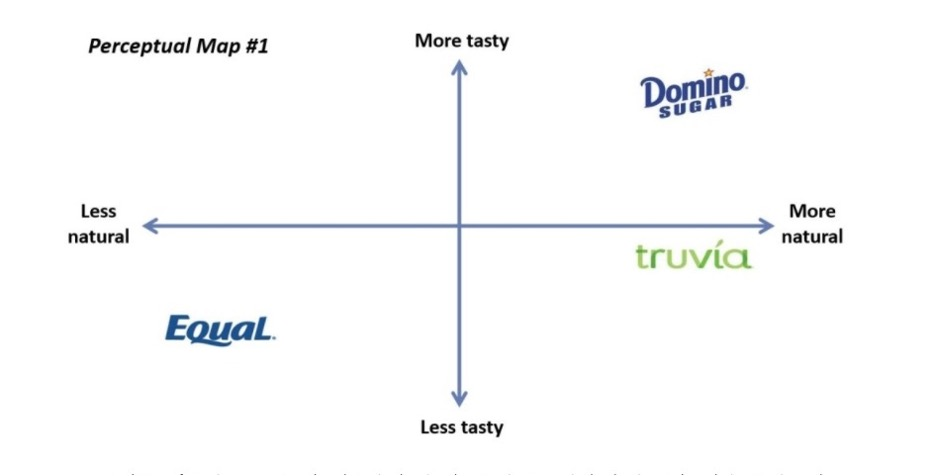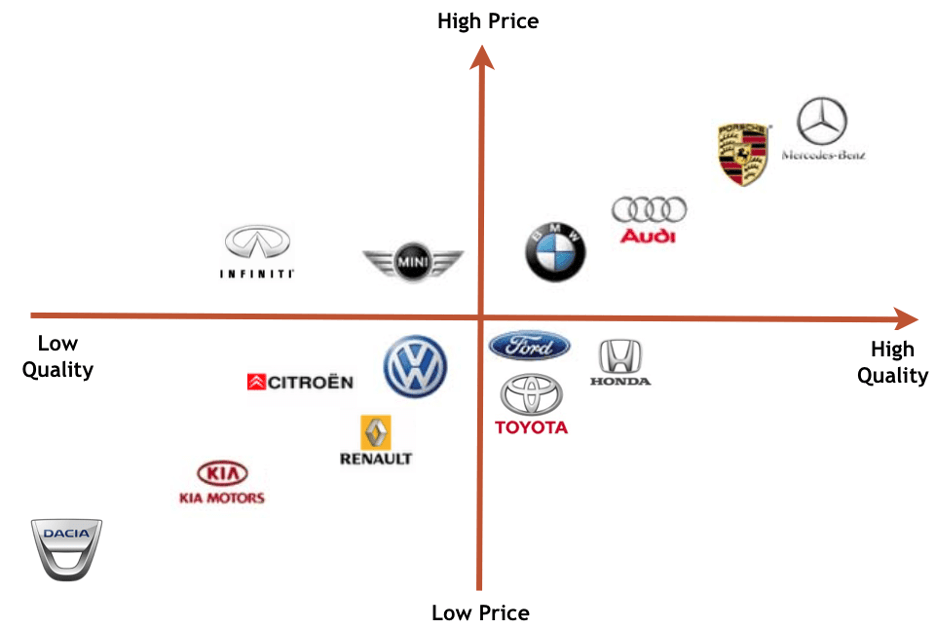In highly congested markets, it's important that a brand delivers product and service offerings that distinguish it from the rest of the pack and lend a competitive advantage. Successful brand positioning is a key avenue for achieving this. Market research is the defining factor here.
In this article, we will be exploring six effective and decisive ways of creating brand positioning strategies that speak clearly to the target market, communicate the brand promise, and form the basis for successful advertising campaigns.
What Is Brand Positioning?
In very simple terms, brand positioning is a way to differentiate or distinguish a product or service from similar offerings on the market. Also referred to as marketing positioning or market positioning, brand positioning provides organisations with the ability to influence consumer perception concerning a brand, and is a marketing strategy that applies across all market segments. An effective market positioning strategy will have customers as the core focus of it.
Brand positioning plays a role in market segmentation. Using common position strategies and an overall effective brand positioning, an organisation can differentiate its products and services from those of its competitors, and make strategic decisions on which market niches to fill. Positioning marketing enables a company to describe how a product or service fills a specific need, want or desire that the target audience is missing.
With successful brand positioning, an organisation can readily communicate its value proposition to a target audience, and make each target customer aware of the brand promise that the organisation will fulfil by delivering the product or service.
What Is a Brand Positioning Statement?
A brand positioning statement is a concise description of the brand's identity or brand personality, and the value that a product or service provides to the target consumer when compared to other brands. The brand identity is a reflection of the brand's values and goals. A brand positioning statement should assist in aligning the marketing efforts of a company with its brand identity and value proposition.
Conventionally, brand positioning statements are tools that internal teams within the marketing division of a company can use in appealing to their target audience and buyer personas in specific ways.
A positioning statement is distinct from a mission statement, which explains why a particular company is doing what it does in the market. The positioning statement specifies what exactly the company is doing with a particular product or service to align with this mission statement and to make good on its brand promise to a particular market segment.
Something worth mentioning is the importance of a brand positioning map. A brand positioning map consists of two-dimensional charts that are used as a tool in brand positioning.
A positioning statement is also different from a value proposition, which essentially describes what sets a particular product or service apart from its competitors. The positioning statement goes further, clarifying the unique benefits that the target customer will enjoy from a product, on the basis of this value proposition.
Here are some positioning statement examples from well-known brands
Coca-Cola

[Image source: Coca-Cola Company]
“For individuals looking for high-quality beverages, Coca-Cola offers a wide range of the most refreshing options — each creates a positive experience for customers when they enjoy a Coca-Cola brand drink. Unlike other beverage options, Coca-Cola products inspire happiness and make a positive difference in customers' lives, and the brand is intensely focused on the needs of consumers and customers.”
Nike

[Image source: Nike]
“For athletes in need of high-quality, fashionable athletic wear, Nike provides customers with top-performing sports apparel and shoes made of the highest quality materials. Its products are the most advanced in the athletic apparel industry because of Nike's commitment to innovation and investment in the latest technologies.”
HubSpot

[Image source: HubSpot]
“Since 2006, HubSpot has been on a mission to make the world more inbound. Today, over 100,000 total customers in more than 100 countries use HubSpot's award-winning software, services, and support to transform the way they attract, engage, and delight customers. Composed of HubSpot's CRM, Marketing Hub, Sales Hub, and Service Hub, HubSpot gives companies the tools they need to Grow Better.”
What Kinds of Brand Positioning Strategies Are There?
Brand positioning strategies may be developed on the basis of a number of criteria, and factors relating to the nurturing of relationships with target consumers. These include:
Pricing: In some market segments, a company that can supply products of a reasonable quality but at a significantly lower price than the competition is positioned to capture a greater market share.
Quality: At the other end of the scale, marketing products and services of superior quality as high-end, luxury, or premium commodities can be an effective brand strategy.
Convenience: Stressing the convenience of a product or service as its value proposition for the target customer is another product positioning strategy.
Differentiation: By focusing on what distinguishes a particular product or service from other offerings on the market, a company can create an effective positioning strategy.
Market Segment: Brand positioning may target a specific market segment or user group, by explaining how the product or service that a company offers is particularly relevant or valuable to this target audience.
Customer Service: This type of brand positioning strategy stresses how a company’s specific offering provides unique and memorable interactions and experiences for the target consumer.
Creating Effective Positioning Marketing Strategies
There are a number of steps your company can take to develop an effective brand positioning strategy. They include:
1. Establish Your Current Position in the Market
Defining your current position in the market opens the way for deciding where your organisation should go next. You can start by looking into who forms your current customer base, and identifying the target market you wish to address. Consider your brand identity (its values and mission), and what sets it apart from other brands. Conduct analysis to establish consumers perceptions of your industry or market segment, consumer preferences regarding the products and services on offer, and any pain points you can address with your new and existing offerings.
2. Study Your Competitors
Analysis of the competition will help in highlighting areas where your company can do better than your rivals, and gain a competitive advantage. This research may draw in information from online searches, customer feedback, social media commentary, and other sources that reflect the strengths and weaknesses of other brands in your market.
3. Determine Your Value Proposition and Unique Selling Point
One of the things that makes brand positioning important is that it helps internal teams and marketers to establish what makes the position of a company and its products unique and/or superior in certain respects to other brands.
4. Write a Positioning Statement
This should be a brief document (typically three sentences or less) describing the uniqueness of your brand in relation to competitors. It should take in the needs, aspirations, and pain points of your target audience which your products and services will address, and provide proof of the benefits and value they will provide to your target customer. You can develop a statement internally through brainstorming and consultation, or use a positioning statement template.
5. Develop a Tagline
Based on your brand positioning statement, create a brief slogan or motto that captures its essential message. This will form a vehicle for communicating your brand positioning to the end customer, and may be used externally. Nike’s “Just do it” is a tagline example from a strong brand that appeals to younger consumers and athletic buyers who resonate with the company’s “Get up and go” approach to its various product lines.
6. Test and Monitor
To achieve successful and long-term brand positioning, you will need to experiment, test, and monitor consumer perception of the brand positioning of your product and service offerings. This analysis will typically involve a mix of qualitative and quantitative materials, and may include information garnered from interviews, focus groups, and statistical surveys. The results should be used to refine your positioning marketing efforts.
A number of tools are available to assist in this monitoring and refinement process. For example, a brand positioning map charts various attributes essential to your target audience, and enables a comparison of how your value proposition and positioning strategies compare with those of other brands.

[Image source: Imgur]
A perceptual map illustrates consumer perception of certain brands. This is helpful in identifying how competitors are positioned relative to your own brand and in identifying opportunities for competitive advantage in the marketplace.

[Image source: Corporate Finance Institute]
If you’d like to learn more about brand positioning, or need help in creating a brand positioning statement of your own, Incisive Edge can help. Get in touch with us.








